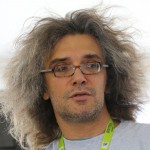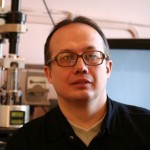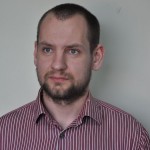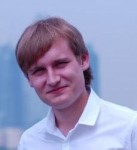Program 2013-2014
In the second round of Program were selected 6 research teams out of 31 applications received in the Fall 2013. The winners represent different Russian universities: Skoltech, Moscow State University (Physical and Chemical Departments), International Laser Center of MSU, ITMO and MISiS. At the beginning of 2014 the winners received funding for further project development. In June 2014 in the frames of 4th Skoltech Innovation Program Conference research teams presented their projects and received recommendations for their improvement towards further commercialization.
Winners of the Program 2013-2014
A PLATFORM APPROACH TO DEVELOP NEW ANTIBIOTIC LEADS BASED ON MICROCINS

Konstantin Severinov – Project investigator
PI Konstantin Severinov (Skoltech), Co-PI Mikhail Khodorkovsky (St. Petersburg State Polytechnical University)
Research direction: Gene- and nano-medicine, Translational medicine
Project Summary: The rapid global spread of bacterial resistance to existing antibiotics and the dearth of development of new antibiotics leads to a significant societal problem that will become even more serious if no action is taken in the near future. This proposal aims to try to help solve this problem by developing and evaluating antibacterial agents based on microcins – ribosomally-encoded antibacterial peptides. Unlike most antibiotics, which are synthesized by complex enzymes, microcin peptide precursors are encoded by genes. Therefore, the power of molecular genetics can be brought to create large libraries of microcin derivatives among which molecules with desired properties can be sought for further development.
NANOPIPETTE ELECTROCHEMICAL BIOSENSORS

Petr Gorelkin – Project investigator
PI Petr Gorelkin (Moscow State University, Department of Chemistry)
Research direction: Gene- and nano-medicine
Project Summary: Project will be focused on development of modification methods for electrodes integrated in nanopipette. Applicant of the project has already obtained preliminary results concerning to application of modified nanopipette for intracellular biosensing. Tools based on double barrel nanopipettes with integrated sensitive electrodes have a great potential to be implemented in pharmaceutical companies for drug discovering. Equipment based on “Smart” nanopipette technology will enable 35000 times faster screening and 5000 times reduce the number of cells required.
SUPERHYDROPHOBISATION OF SYNTHETIC FABRICS BY DEPOSITION OF ULTRATHIN FLUOROPOLYMER FILMS FROM SOLUTIONS IN SUPERCRITICAL CARBON DIOXIDE

Marat Gallyamov – Project investigator
PI Marat Galyamov, Co-PI Mikhail Kondratenko (Moscow State University, Department of Physics)
Research direction: Advanced materials
Project Summary: We propose a new promising technique of imparting superhydrophobic properties to synthetic fabrics by depositing ultrathin fluoropolymer films from the solutions in supercritical carbon dioxide (SC CO2). This technology has a wide range of applications. It will allow one to create self-cleaning breathable waterproof fabrics for production of clothes and outdoor equipment. Financial support within the project will be used to develop prototypes of fabrics with stable superhydrophobic properties.
PERSPECTIVE GRAPHENE-BASED MATERIALS WITH HIGH ABSORPTION INDEX IN VISIBLE AND NEAR IR RANGE

Stanislav Evlashin – Co-Project investigator
PI Tatiana Murzina (Moscow State University, Department of Physics)
Research direction: Quantum physics/technology, Advanced materials
Project Summary: The project implies the development of the fabrication technology and studies of optical characteristics of Carbon Nanowalls (CNWs) in a wide wavelength range from 300 nm up to 200 μm. The main idea is to optimize the CNWs fabrication technology in order to compose highly absorptive and nonreflective nanocoatings.
MULTISENSOR DEVICE FOR INSTRUMENTAL TOXICITY ASSESSMENT

Dmitry Kirsanov – Project investigator
PI Dmitry Kirsanov, Co-PI Andrey Legin (ITMO University)
Research direction: Machine learning and artificial intelligence, Advanced materials
Project Summary: This project is devoted to the development and practical advancement of the multisensor device and the software for instrumental toxicity assessment in environmental monitoring. Recently we accomplished the proof of concept for a new approach to toxicity evaluation. This new concept is based on instrumental measurements in samples with a specially developed electrochemical multisensor system and multivariate processing of the obtained data. This combination of sensor array and chemometric techniques allows for toxicity determination in terms of bioassay without immediate involvement of living creatures (besides on a calibration stage); measurements are fast and simple; the results are in toxicity units of corresponding biotest method. Such kinds of experiments are unique and were never reported in scientific periodicals before and we see a very attractive business opportunity in their advancement towards the environmental monitoring market.
SUPERPLASTIC ALUMINUM SHEETS

Anton Kotov – Co-Project investigator
PI Anastasia Mikhaylovskaya, Co-PI Anton Kotov and Alexey Solonin (National University of Science and Technology “MISiS)
Research direction: Advanced materials, superplasticity of the metallic materials, structure, and construction.
Project Summary: Superplasticity is the specific state in which solid crystalline material can be deformed well beyond its usual breaking point: usually more than 200 % during tensile deformation. This project is direct to the optimization of the alloys composition and laboratory technology of superplastic aluminum sheets producing. The main purposes of the project are the developing of the new materials, and producing the thickened sheets for commercial introduction. The new materials offers opportunities to: reduce part count by forming components in a single piece, increase structural integrity of the part and assembly, reduce part weight, speed up final assembly.